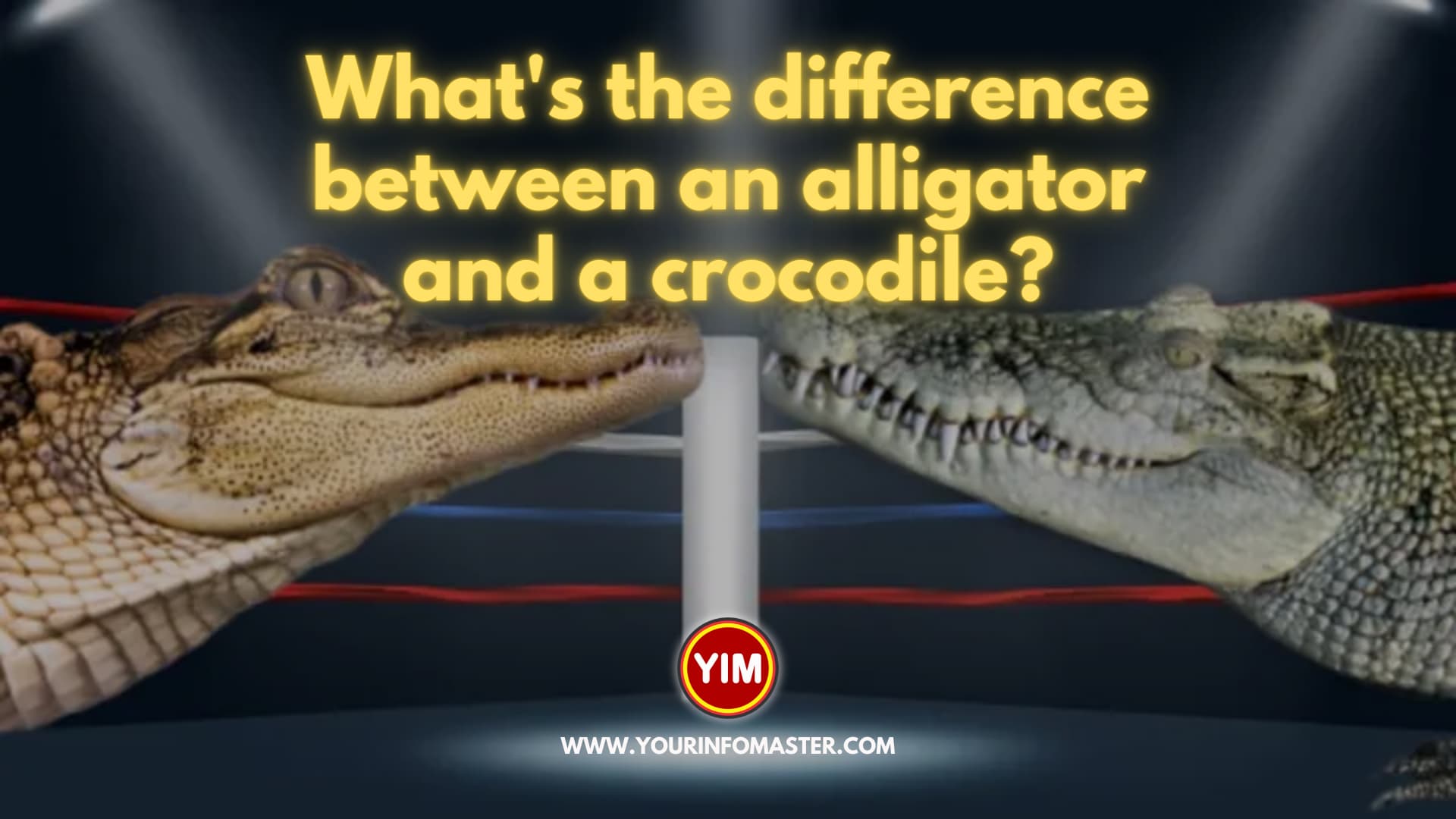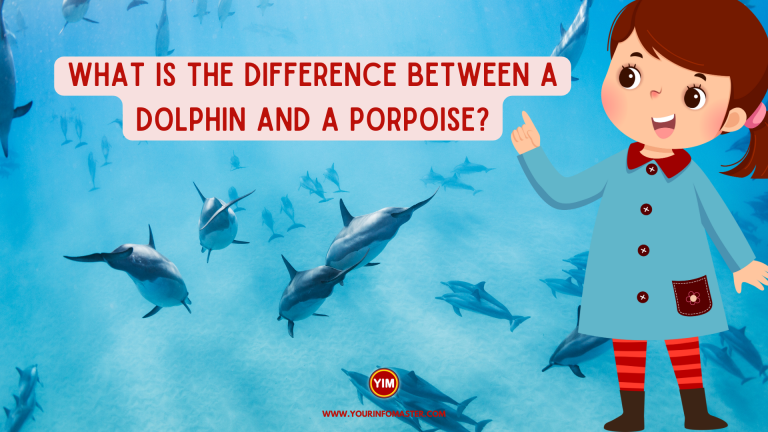What’s the difference between an alligator and a crocodile? It’s a question that many people ask, and one that can be difficult to answer if you’re not familiar with these two species. While alligators and crocodiles may look similar at first glance, there are several key differences that set them apart. In this blog post, we’ll take a closer look at these differences and explore what makes each of these creatures unique.
Alligators and crocodiles are both reptiles that belong to the same order, Crocodylia. However, they come from different families – alligators are part of the Alligatoridae family, while crocodiles belong to the Crocodylidae family. One of the main differences between these two families is the number of species within each. The Alligatoridae family has only two species – the American alligator and the Chinese alligator. In contrast, the Crocodylidae family has 14 different species, including the saltwater crocodile, Nile crocodile, and American crocodile.
While alligators and crocodiles may have a similar overall appearance, there are several key differences that set them apart. One of the most obvious differences is the shape of their snouts. Alligators have a broad, rounded snout, while crocodiles have a longer, pointed snout. This difference in snout shape is due to the type of prey that each species hunts. Alligators primarily eat fish, turtles, and smaller mammals, while crocodiles have a more varied diet that includes larger mammals like zebras and antelope. The longer, pointed snout of the crocodile allows it to grip and hold onto its prey more effectively than the broad snout of the alligator.
Another difference between alligators and crocodiles is their habitat. Alligators are primarily found in freshwater habitats such as swamps, lakes, and rivers in the southeastern United States and China. Crocodiles, on the other hand, can be found in a wider range of habitats, including freshwater, saltwater, and even brackish water environments. They are found throughout much of Africa, Australia, and South America, as well as parts of Asia and the southern United States.
The skin of alligators and crocodiles also differs in appearance. Alligator skin has a smoother texture and a more uniform scale pattern than crocodile skin. Crocodile skin, on the other hand, has a more bumpy, irregular texture and a less uniform scale pattern. In addition, crocodile skin is often considered more valuable for use in fashion and luxury goods, which has led to over-harvesting of some crocodile species for their skin.
When it comes to behavior, alligators and crocodiles also exhibit some differences. Alligators are generally more docile and less aggressive than crocodiles, although they can still be dangerous if provoked or threatened. Crocodiles, on the other hand, are known for their aggressive behavior and are more likely to attack humans. In fact, crocodiles are responsible for more human fatalities than alligators each year.
One area where alligators and crocodiles do have some similarities is in their reproductive habits. Both species lay eggs, and the female will guard the nest and protect her young after they hatch. However, there are some differences in the details of their reproductive behaviors. For example, female crocodiles are known for their aggressive defense of their nests, while female alligators may be more likely to leave their nest unguarded for short periods of time.
In terms of physical size, there is also some variation between alligators and crocodiles. The largest species of crocodile, the saltwater crocodile, can grow up to 23 feet long and weigh up to 2,200 pounds, making it the largest reptile in the world. In comparison, the largest alligator ever recorded was just over 19 feet long and weighed around 2,000 pounds.
One other key difference between alligators and crocodiles is their vocalizations. Alligators are known for their deep, bellowing roars, which they use to communicate with one another during mating season or to warn off potential threats. Crocodiles, on the other hand, are capable of producing a wider range of vocalizations, including hisses, grunts, and even high-pitched noises that are beyond the range of human hearing.
Despite these differences, there are also many similarities between alligators and crocodiles. Both species are top predators in their respective habitats, and they play important roles in their ecosystems by helping to control populations of other animals. They are also both highly adaptable, and are able to survive in a wide range of environments.
Summary of difference between an alligator and a crocodile
Here are 10 key differences between alligators and crocodiles:
- Snout shape: Alligators have a broad, rounded snout, while crocodiles have a longer, pointed snout.
- Habitat: Alligators are primarily found in freshwater habitats such as swamps, lakes, and rivers, while crocodiles can be found in both freshwater and saltwater environments.
- Skin texture: Alligator skin has a smoother texture and a more uniform scale pattern than crocodile skin.
- Scale pattern: Crocodile skin has a more bumpy, irregular texture and a less uniform scale pattern than alligator skin.
- Diet: Alligators primarily eat fish, turtles, and smaller mammals, while crocodiles have a more varied diet that includes larger mammals like zebras and antelope.
- Aggressiveness: Alligators are generally less aggressive than crocodiles, which are known for their aggressive behavior and are more likely to attack humans.
- Vocalizations: Alligators produce deep, bellowing roars, while crocodiles are capable of producing a wider range of vocalizations, including hisses, grunts, and high-pitched noises.
- Reproductive behavior: While both species lay eggs and the female guards the nest and young, female crocodiles are known for their aggressive defense of their nests, while female alligators may leave their nest unguarded for short periods of time.
- Number of species: The Alligatoridae family has only two species, while the Crocodylidae family has 14 different species.
- Size: The largest crocodile species, the saltwater crocodile, can grow up to 23 feet long and weigh up to 2,200 pounds, while the largest alligator ever recorded was just over 19 feet long and weighed around 2,000 pounds.
Conclusion
So, what’s the difference between an alligator and a crocodile? While they may look similar at first glance, there are several key differences that set these two species apart. From the shape of their snouts to their habitat preferences, skin texture, and behavior, there are many factors that distinguish alligators from crocodiles. However, despite these differences, both species are fascinating creatures that play important roles in the ecosystems where they live.







